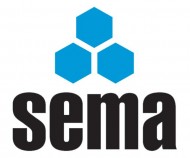Our first question this month concerns trained personnel and what that training enables them to carry out. Then our next question concerns legislation in respect of minimum aisle spacing between racks and shelving.
 I’m trained what can I do?
I’m trained what can I do?
Q. Please can you tell me what the legal requirement / duty is to be able to conduct in house racking repairs in a warehouse environment. I have a trained person in terms of inspection, but need to know what he can / cannot do in terms of replacing beams / uprights etc.
A. First of all we confirm that there are no specific laws or regulations that require certain qualifications for those who carry out racking repairs. In this regard it is no different from driving a fork lift truck in as much as there is no law that requires a driver to have a fork lift truck licence. It would be good practice to do so and various approved codes of practice would recommend that it should be done however the important aspect would be that the driver should be ‘competent’ with various ways open of demonstrating this competency. Most employers would send their drivers on a training course from a recognised trainer demonstrating that they have taken reasonable care to ensure that their drivers were ‘competent’. However, they are getting a ‘certificate of training’ rather than a ‘licence to drive’ in the legal sense.
The same thing applies to rack repairs which can vary in complexity from changing a beam in a 2 metre high long span shelving system to changing an upright in a 30 metre high fully automated warehouse. Plainly the skill levels and competencies required would be different in each of those cases.
Ultimately the competencies and skill levels required comes down to a risk assessment of the work involved and an assessment of the skills of the in-house staff that you have available to carry out this work. It might be concluded that for, say, changing a beam, in 2 metre high long span this could be done by an experienced and competent maintenance technician. Changing an upright on some six metre high pallet racking might require some formal training such as attendance on one of the SEMA Rack Maintenance courses. Changing an upright in a thirty metre high integrated storage system might be better done by hiring in a team of specialist (SEIRS qualified) installers experienced in this kind of work. Such people often will be much faster and cheaper in doing difficult jobs compared with in house staff as they do not have to learn or refresh their skills as they go along.
Whatever is done it must be preceded with the preparation of a formal risk assessment and method statement for the work being contemplated.
Minimum Aisle Width
Q. Is there any regulation/guidance as to minimum distance between rows of racking/shelving for safe walking, retrieving of items (e.g. files) in respect to posture, manual handling, etc.?
A. There are few regulations covering this aspect as long as the aisle in question is not also an ‘escape route’. There is some guidance on minimum requirements in the building regulations and elsewhere however this seems to have been arrived at on the basis that substantial items requiring storage would have their own risk assessment carried out before an aisle dimension was decided upon.
This approach does have some logic e.g. if a shelving system for record filing was being designed where a single operator of the system was filing a few sheets of paper at a time then a fairly minimal dimension could be acceptable. If on the other hand several people were required at the same time to operate the system and had a need to pass each other in the aisle while perhaps pulling or pushing trolleys of perhaps x-ray files or heavy ledgers then a totally different and much more substantial aisle width would be required. This would require more information on usage, dimensions of trolleys, etc.
All this is even before the manual handling aspects of bending down or stretching up to place or retrieve a particular file is considered and again this would depend on the weight of the file concerned. Some will weigh no more than a few grams while others can be several kilos so this can be a fairly complex area which requires some clear thought together with an unambiguous definition of the proposed usage of the system at the design stage.
SEMA is delighted to be working with WLN on the storage Question and Answer Column. On the WLN website is a list of previously published columns.
SEMA Technical Enquiries
If you have a query send it to us and we will do our best to have it answered by one of our technical experts.
SEMA Rack Safety Awareness and Inspection Courses
SEMA runs a one-day safety course on Rack Safety Awareness and Inspection.
SEMA Approved Rack Inspectors Qualification
This qualification is aimed at professionals who conduct rack surveys as an integral and significant part of their duties.
SEMA USERS Club
SEMA runs a USERS Club designed to be of benefit to purchasers and users of storage equipment.




Comments are closed.